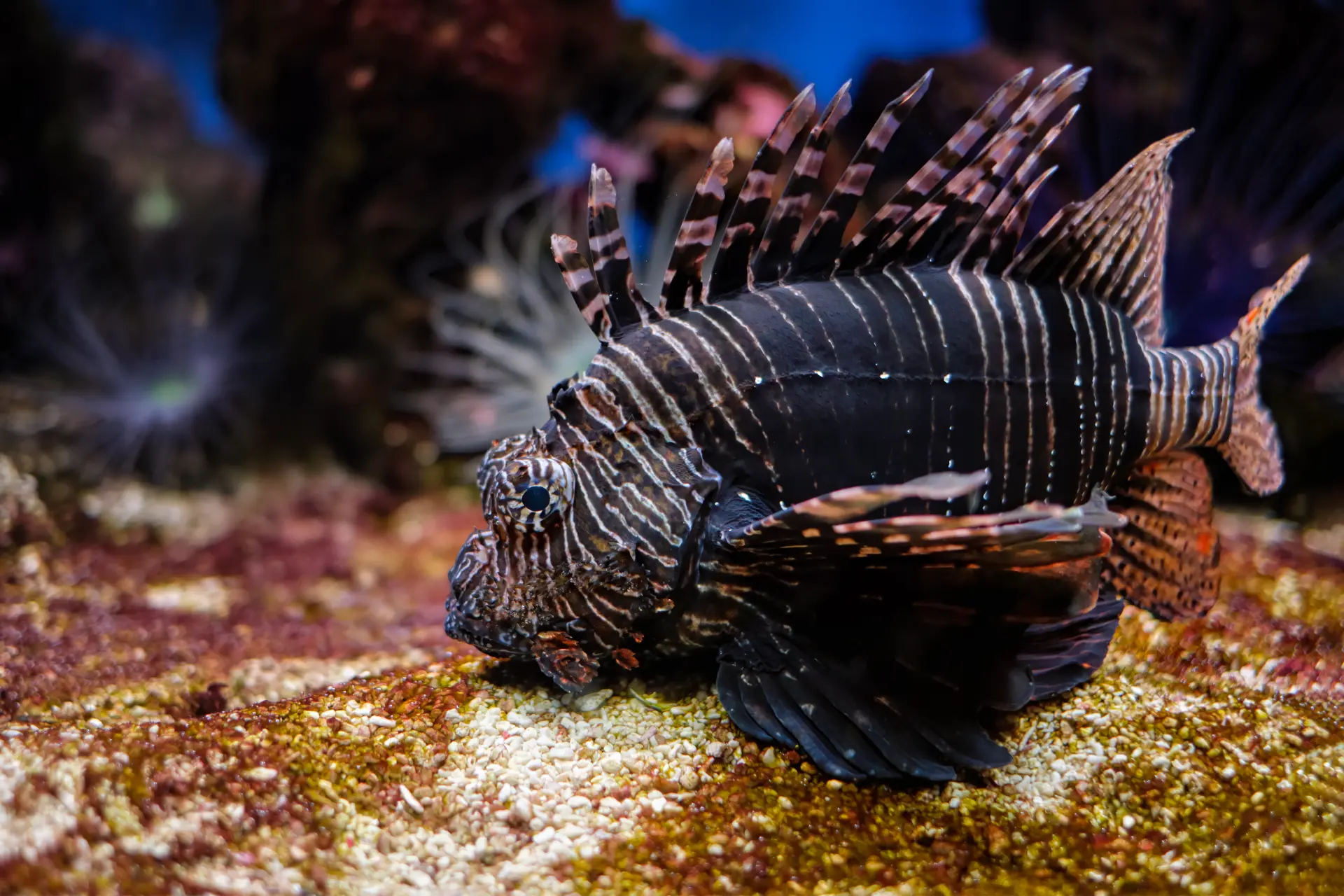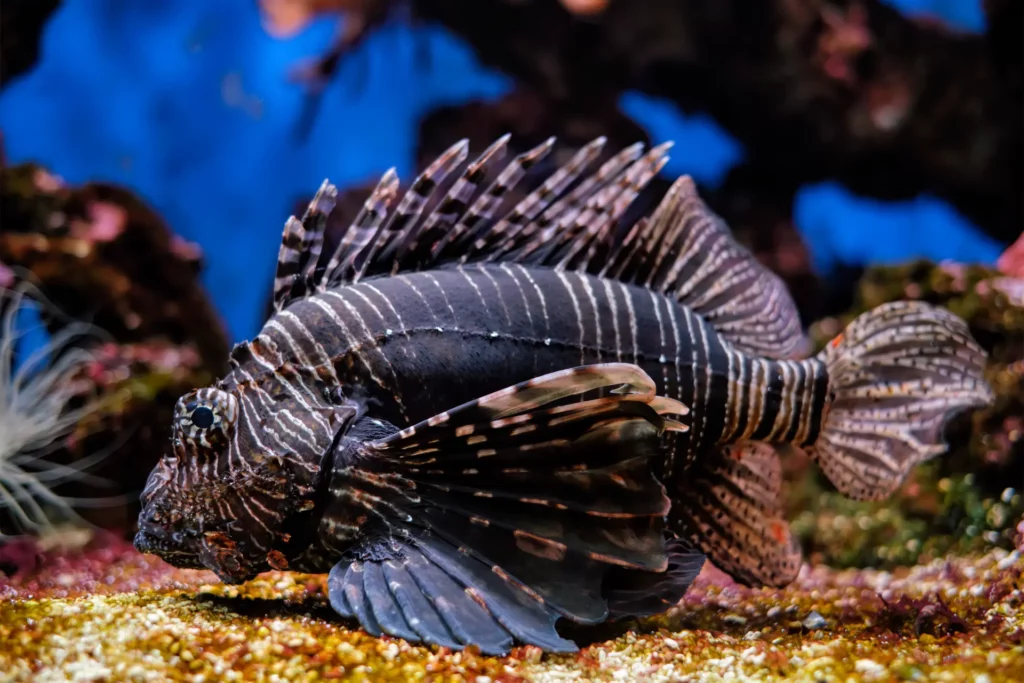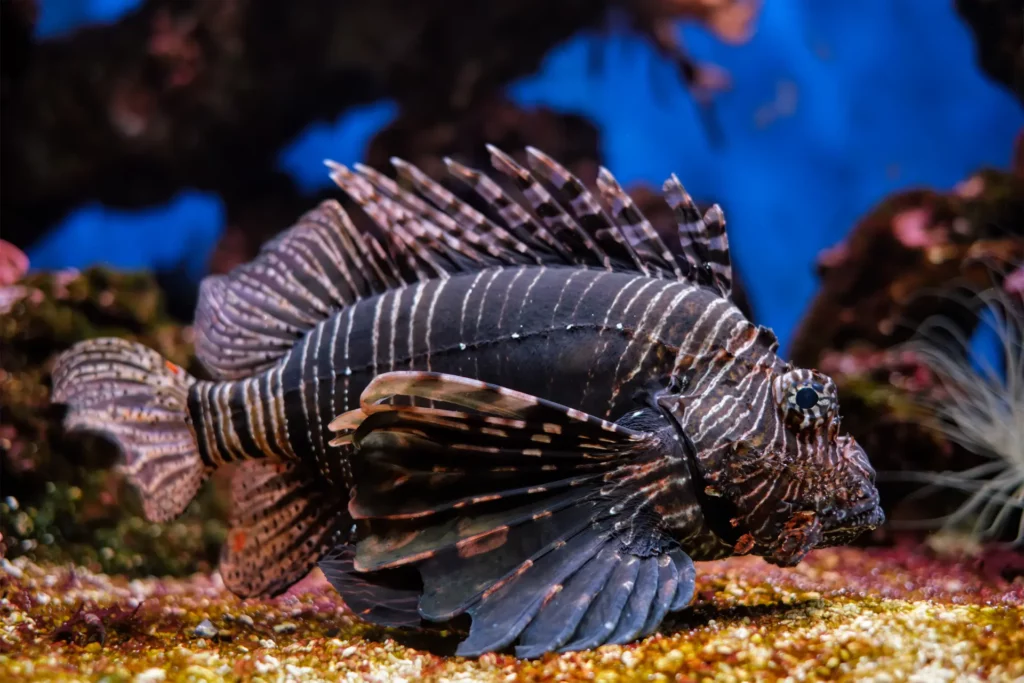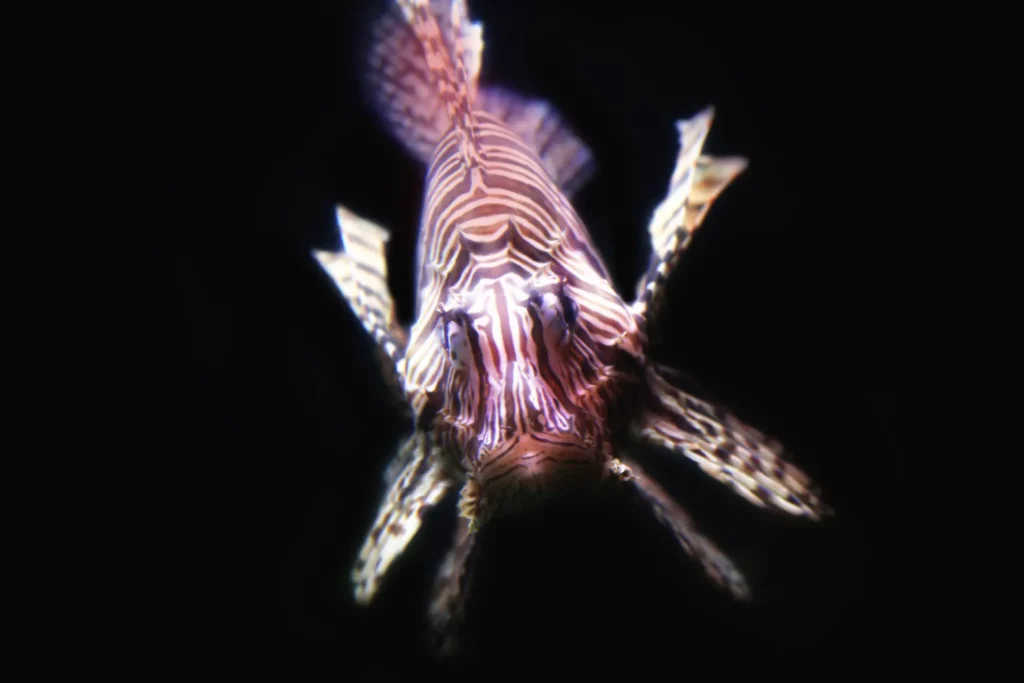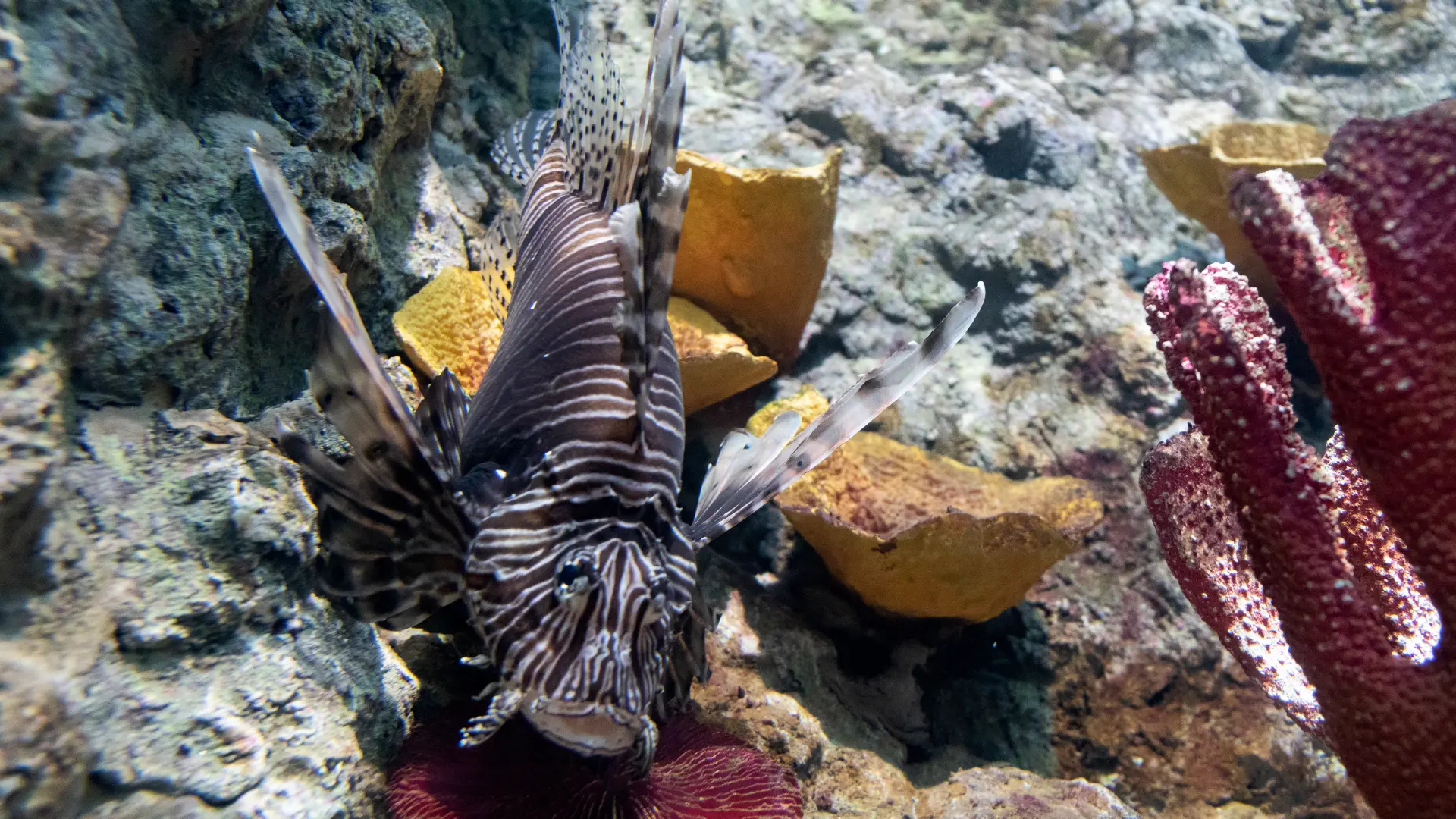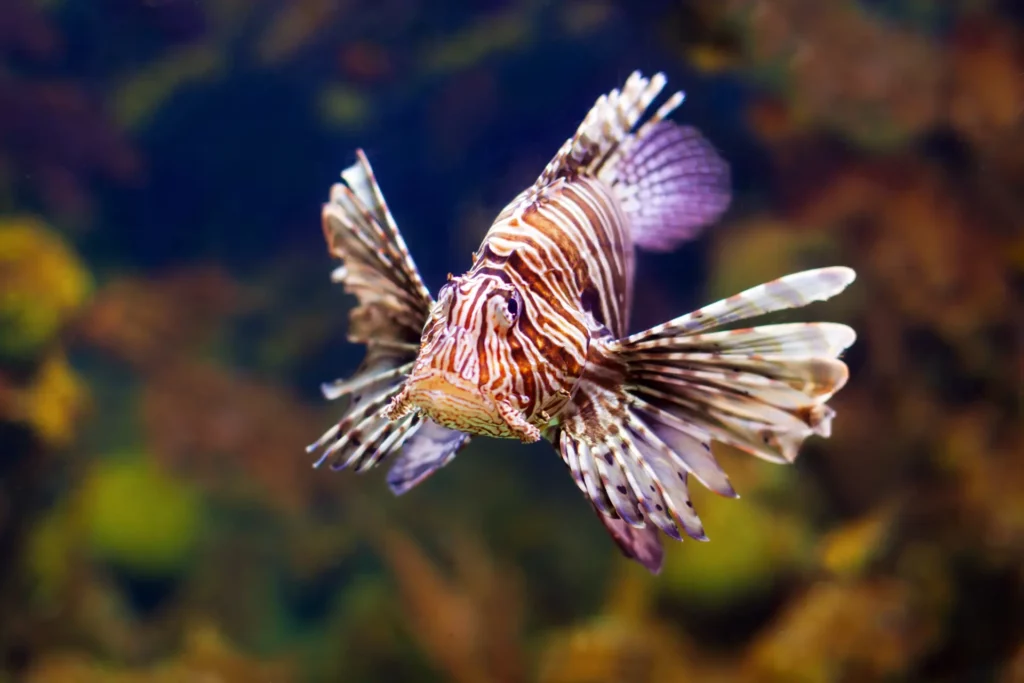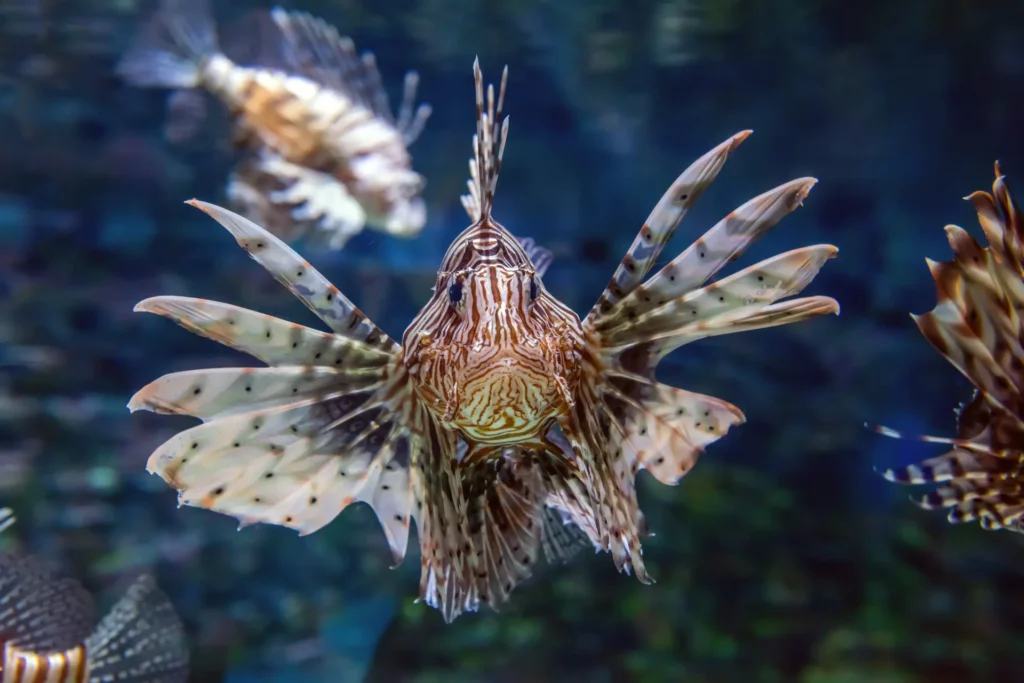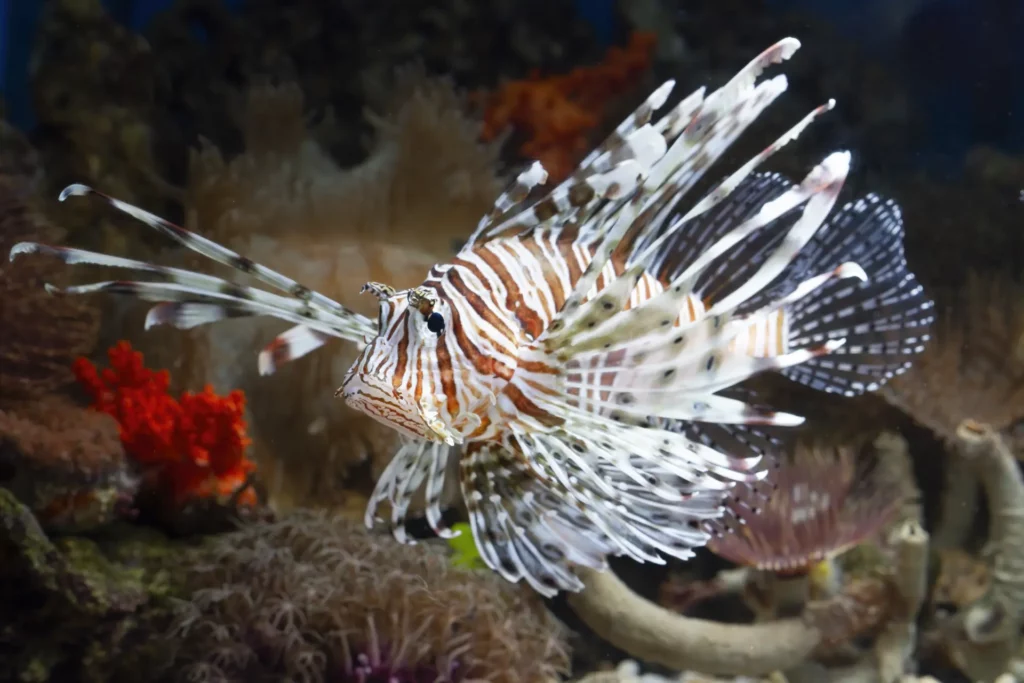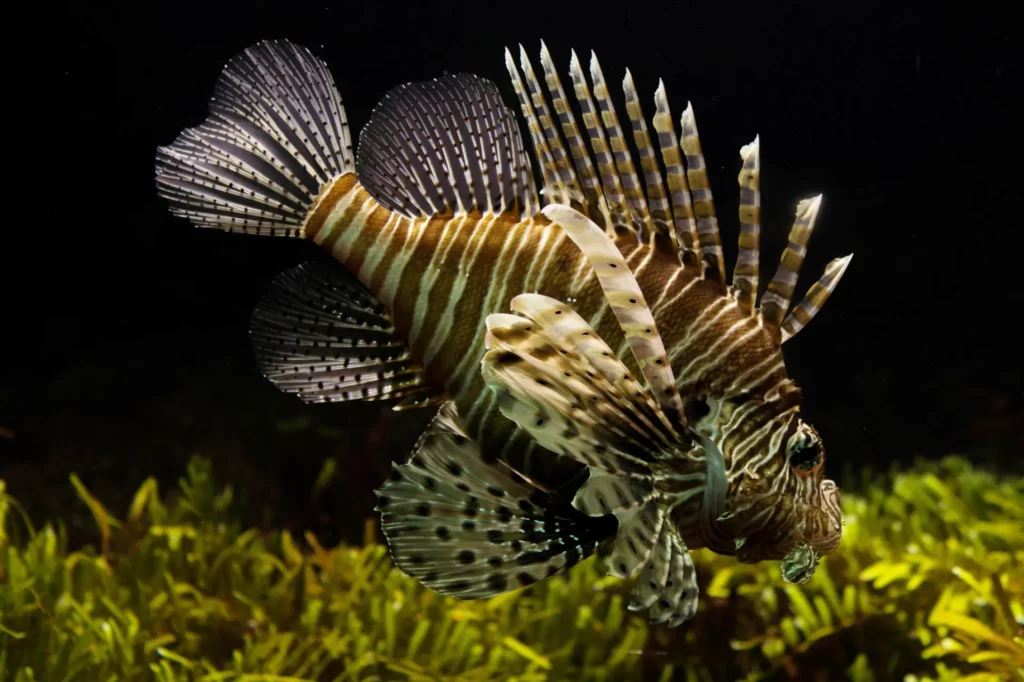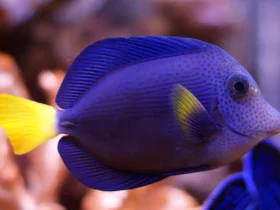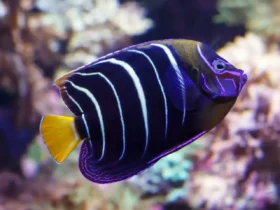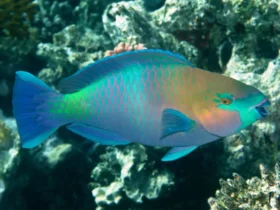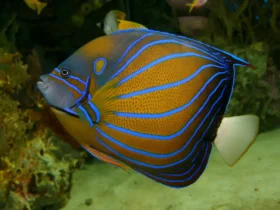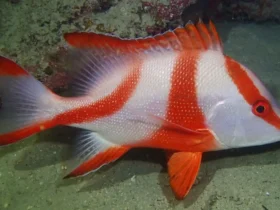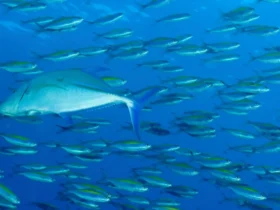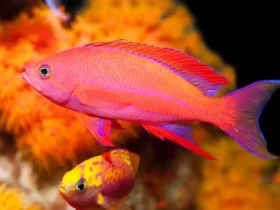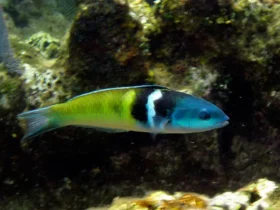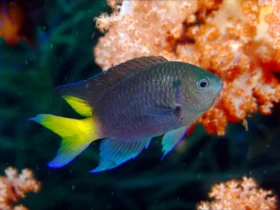The Black Scorpionfish (Scorpaena porcus) is a fascinating and mysterious creature that inhabits the rocky coastal areas of the northeastern Atlantic Ocean, particularly in the Mediterranean Sea. Renowned for its remarkable ability to blend into its surroundings, the Black Scorpionfish is a true master of camouflage. In this article, we will delve into the intriguing world of the Black Scorpionfish and explore its unique characteristics, behavior, and importance in its ecosystem.
>> Discover 7 Spectacular Fish Found in Russia
Appearance and Camouflage
The Black Scorpionfish possesses a distinct appearance that aids its camouflage. Its body is covered in a variety of skin flaps and spines, which provide excellent protection from predators and help it blend seamlessly into its rocky environment. Its coloration can vary, ranging from dark brown to black, allowing it to merge with the surrounding rocks and seaweed. Its textured skin and bumpy appearance further contribute to its remarkable camouflage, making it nearly invisible to unsuspecting prey.
Venomous Spines and Defensive Mechanisms
One of the most notable features of the Black Scorpionfish is its venomous spines. Located along its dorsal fin, these spines contain potent toxins that can cause intense pain and discomfort if a human comes into contact with them. These venomous spines serve as a defensive mechanism, deterring predators and ensuring the fish’s survival. It’s crucial to exercise caution and avoid touching or provoking these fascinating yet potentially dangerous creatures.
Feeding Behavior
The Black Scorpionfish is an ambush predator, lying in wait for unsuspecting prey to pass by. Its excellent camouflage allows it to remain hidden while it patiently waits. When an opportunity arises, the Black Scorpionfish strikes with incredible speed and accuracy, engulfing its prey in a swift motion. It primarily feeds on small fish, crustaceans, and other invertebrates that inhabit the rocky areas it calls home.
Reproduction and Lifecycle
During the mating season, male Black Scorpionfish undergo remarkable color changes, turning brighter and displaying a variety of patterns to attract females. After successful courtship, the female produces clusters of adhesive eggs, which attach to rocks or other substrates for protection. The male then fertilizes the eggs externally. Once hatched, the juvenile Black Scorpionfish embark on a perilous journey, facing numerous threats and predators while they grow and develop into adults.
Ecological Importance
The Black Scorpionfish plays a vital role in its ecosystem. As an apex predator, it helps regulate the populations of its prey species, maintaining a balanced ecosystem. Its camouflage abilities allow it to hunt effectively while avoiding predation, contributing to its survival and the overall health of the coastal ecosystem it inhabits.
Conservation Efforts
While not currently listed as endangered, the Black Scorpionfish faces threats from habitat degradation, pollution, and overfishing. Conservation efforts are necessary to ensure the continued existence of this remarkable species. Proper management of marine protected areas, sustainable fishing practices, and public awareness about the importance of preserving marine biodiversity are crucial for the long-term survival of the Black Scorpionfish and its habitat.
The Black Scorpionfish Images
